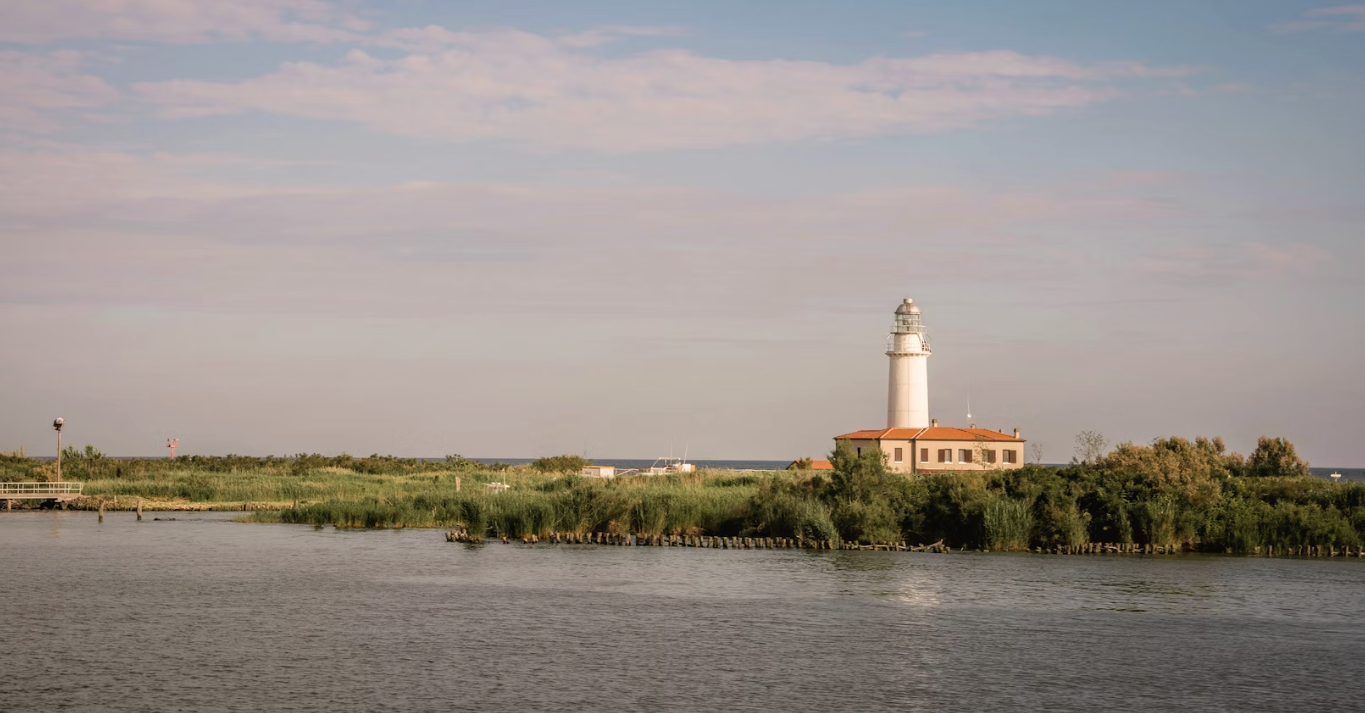The Goro Lagoon is part of the interconnected system of the Po River Delta that comprises five river branches, seven lagoons, and several wetlands. The lagoon has an area of 35 km2 and a volume of 51×106 m3, is delimited by the Po of Goro river branch, and is partially separated from the sea by two spits, the Scanno of Goro and Scanno of Volano. Exchange with the sea occurs through a 3 km wide and very shallow inlet, which is the submerged part of a previous spit that started to erode in 1991 after a channel had been dredged in the middle.
Similarly to the Po delta lagoons, the Goro lagoon has a small morphological variability, the channel network is simple and the salt march area is not significant. Therefore, most of the lagoon volume (87%) is determined by the tidal flats, with an average depth of 1.5 m. The salt marshes and intertidal flats occupy only 6% of the total area of the lagoon, which is going to furtherly decrease due to the combined effect of the subsidence and the sea level rise.
The Goro Lagoon is an area known internationally for the production of clams that find their ideal habitat in these shallow sandy bottoms. A real “open air” industry (the first clam production company in Italy and Europe, the second in the world) in which 14-15 thousand tons of mussels are produced per year, 54% of Italian production and 40% of the European one. A hub that employs around 1,400 people with an annual turnover of 50-70 million euros.
The sustainable productivity of this area is connected to the hydrodynamic and environmental conditions which depend on the seabed, the coastline, the exchange of water with rivers, the open sea, and atmospheric and tidal forcings.
The Sacca di Goro is also a protected lagoon environment (with a wide variety of fauna): RAMSAR area, SIC and ZPS. Part of the Scanno is a National Natural Reserve. Finally, it is an important seaside resort in Emilia-Romagna, with 15 establishments and about 30,000 visitors/year, and an important port center for a total of 700 fishing boats and 150 pleasure boats. The lagoon is therefore an environment of the highest strategic, environmental and socio-economic value, in continuous evolution that requires constant maintenance to preserve its habitat by those who work there and with the decisive support of the institutions, the Emilia-Romagna Region for first.
Alessandra De Savino
adesavino@arpae.it

